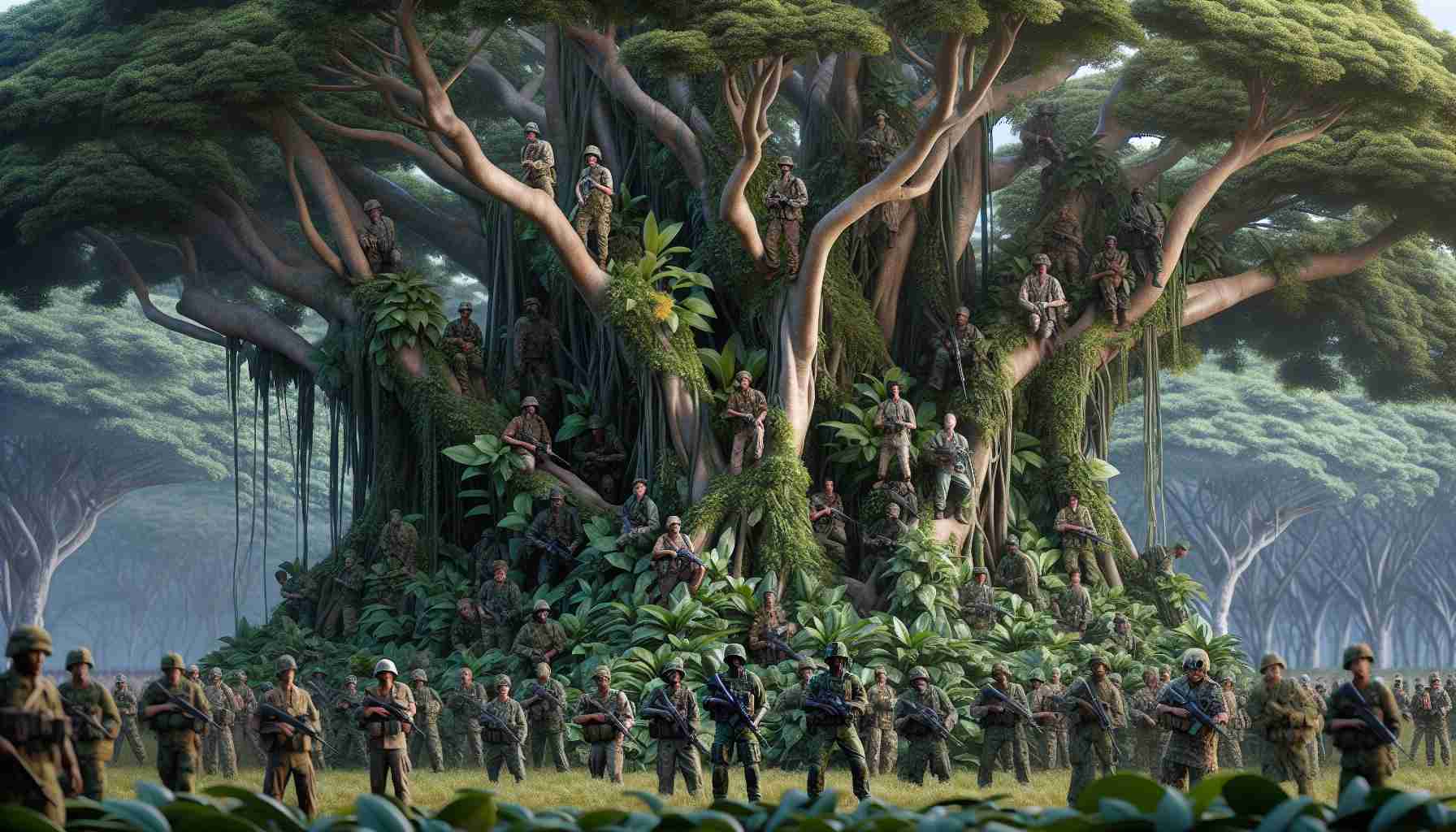- The Army in the Trees explores the forgotten story of two Japanese soldiers who remained hidden in trees for two years after World War II ended.
- The film is based on Hisashi Inoue’s acclaimed play and is set amidst the natural beauty of Okinawa’s Ie Island.
- Shinichi Tsutsumi and Yuki Yamada deliver powerful performances, bringing the soldiers’ struggles and hopes to life.
- The movie delves into themes of survival, resilience, and the overlooked personal stories of wartime endurance.
- Released on July 25, the film aims to provoke reflection and awareness, highlighting the enduring impacts of history and war.
- Through its narrative, the movie emphasizes unseen courage and the importance of remembering past conflicts to inform a more conscious future.
Amidst the lush, green tapestry of Okinawa’s Ie Island, a movie unravels a tale long tucked away from the history books. As Japan commemorates 80 years since the end of World War II, this cinematic exploration pierces the veil of time to recount a soldier’s life suspended—quite literally—on the branches of reality.
“The Army in the Trees” presents the gripping narrative of two Japanese soldiers, oblivious to the war’s end, lingering for two years above the fray on tall trees. At the peak of war’s chaos, actors Shinichi Tsutsumi and Yuki Yamada breathe life into these hidden warriors, embodying their struggles and hopes amidst Okinawa’s turbulent skies.
Filmed entirely in the locales of Okinawa, this movie adaptation of Hisashi Inoue’s acclaimed play immerses its audience in the dense foliage and fraught silence of life above the battlefield. It speaks volumes of survival and silent battles, offering a lens into an overlooked saga of resilience.
Tsutsumi’s portrayal of Kazuo Yamashita, inspired by the real-life soldier Shizuo Yamaguchi, unveils not just a personal story of survival but a shared memory etched into the annals of conflict. Yamada adds depth, portraying Seijun Agena with a universally resonant vulnerability—an ode to all those caught in the whirlwinds of war.
With its nationwide release on July 25, The Army in the Trees aims to awaken audiences, urging them to remember, reflect, and ensure that such stories light the path to a more conscious future. As shadows of the past stretch into today, this film stands as a poignant reminder of the unseen courage lingering beneath history’s surface.
The Untold Journey: Revealing the Hidden Narratives of War Through Film
Real-World Use Cases and Comparisons
“The Army in the Trees” serves as a compelling medium to unearth ignored wartime stories, illustrating the profound psychological and physical impacts of war on soldiers. Films exploring similar themes, such as “The Thin Red Line” or “The Last Emperor,” highlight the human perspectives lost in historical discourse.
– Cultural Impact: Such narratives foster a deeper understanding of individual and collective experiences, influencing public consciousness and educational curricula. Where typical WWII movies often center around major battles, this film offers a microcosmic story, rich in emotional depth and context.
– Psychological Exploration: This film has the potential to be used in discussions on post-traumatic stress disorder (PTSD) and survival psychology, providing a visual case study on resilience and human endurance.
Market Forecasts & Industry Trends
The success of culturally and historically poignant films is backed by rising interest in unique storytelling that diverges from Hollywood’s dominant spectacles. According to a report by Hollywood Reporter, there is a growing demand for films offering international and introspective narratives.
– Trend in Asian Cinema: As the global market becomes more receptive to diverse cultural voices, films like “The Army in the Trees” could gain traction beyond Japanese borders. The success of movies such as “Parasite” highlights a trend in the elevation of Asian cinema on the world stage.
Pros & Cons Overview
Pros:
– Offers a unique perspective on a lesser-known side of WWII.
– Strong performances by lead actors enhance emotional resonance.
– Focus on survival psychology and human resilience.
Cons:
– May not appeal to audiences seeking fast-paced action.
– Niche historical focus might limit mainstream allure.
Features, Specs & Pricing
Considering the details available, films like “The Army in the Trees” generally feature:
– High-quality cinematography capturing the scenic beauty of Okinawa.
– Authentic historical settings to preserve narrative accuracy.
– A moderate budget with a focus on storytelling and character development rather than special effects.
Controversies & Limitations
Controversies:
– Some may critique its historical portrayal if inaccuracies are perceived or if it leans heavily into fictional narratives.
Limitations:
– The film’s thematic complexity might make it less accessible to younger audiences or those unfamiliar with the historical context.
Security & Sustainability
Film production increasingly emphasizes sustainability, with the industry adopting practices like carbon offsetting and minimizing waste on set. The use of natural settings, as seen in the Okinawa filming locations, might reduce the carbon footprint compared to built sets.
Insights & Predictions
– The film is likely to encourage renewed interest in unexplored historical narratives and could lead to the production of similar projects.
– As educational institutions incorporate more diverse historical perspectives, films like this can become valuable educational tools.
Actionable Recommendations
1. For History Enthusiasts: Dive into personal stories from WWII to gain a nuanced understanding of its impact across different cultures.
2. For Educators: Integrate such films into curricula to provide students with a broader historical narrative and spark critical discussions.
3. For Film Buffs: Explore films outside the usual spectrum to uncover hidden gems that offer fresh perspectives on well-trodden subjects.
For more on similar historical and cultural explorations, visit IMDb for a treasure trove of cinematic creations fueled by human experiences across time.
By delving into such narratives, audiences are empowered to remember and reflect, shaping a conscientious future mindful of past sacrifices and stories.
